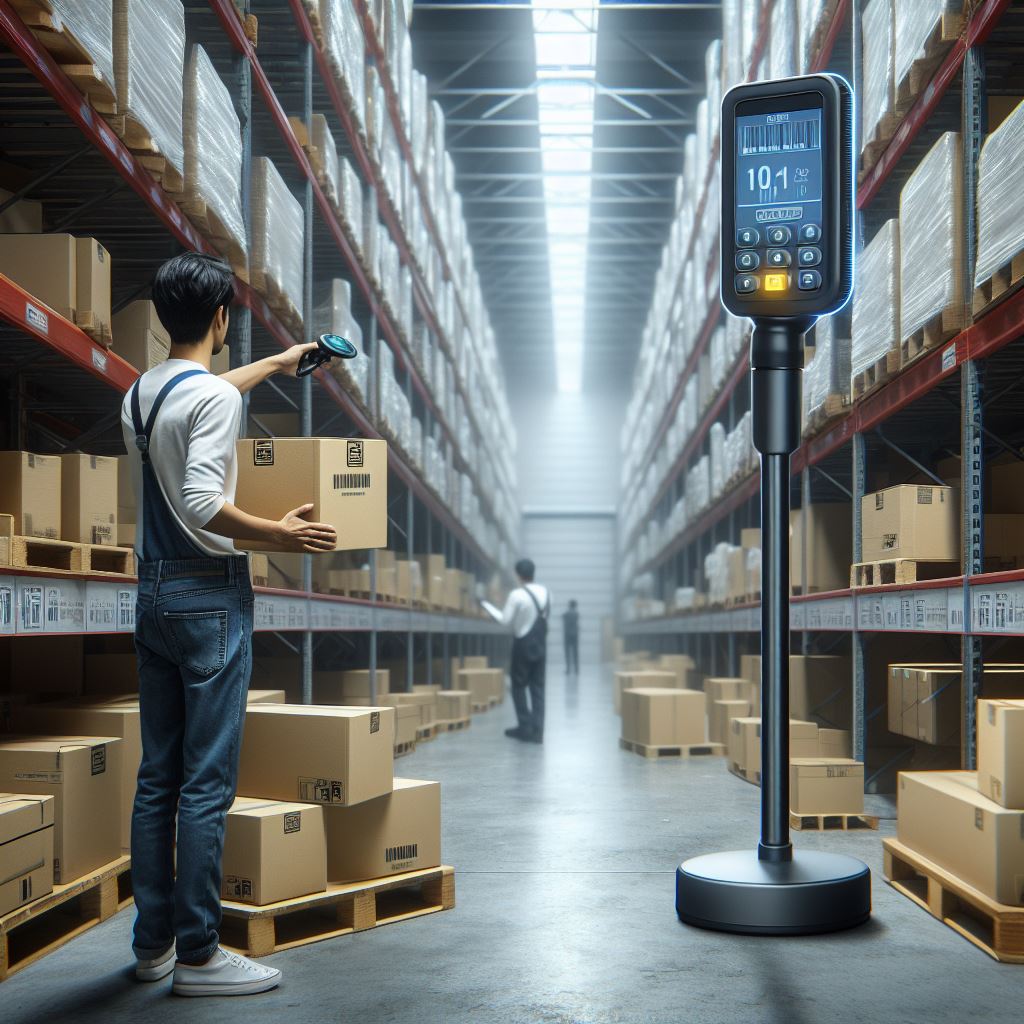The Future: RFID Tags for Inventory Management

Introduction
In today’s fast-paced world, inventory management is a critical aspect of any business. Companies of all sizes are regularly evaluating their current capabilities and finding ways to squeeze as much efficiency as possible out of their existing infrastructure while preparing to adopt new technologies that can take their performance to new levels. One emerging technology that has received a lot of attention with the potential to revolutionize the inventory management industry is radio-frequency identification (RFID). we will explore the current state of RFID tag usage, including pros and cons, some insights on their utility versus the leading solution for asset tracking and inventory management (barcode labels), and a look at RFID tags for inventory management.
Definition of RFID Tags

The use of RFID for inventory management requires a scanner that uses radio waves to communicate with an RFID tag. The tag itself contains a microchip that allows the reader to read data and write data to the tag for real-time updating in place. Each tag is wrapped in a material like plastic or paper for protection and can be affixed to a variety of surfaces for tracking.
There are two types of RFID tags:
- Passive RFID Tags – Most tags used for inventory tracking are passive RFID tags, meaning they contain no battery and are powered by the waves from the readers.
- Active RFID Tags – Active tags are powered, come at a higher cost, and are used for long-range tracking of machinery such as trucks and railway cars.
Pros of Using RFID Tags for Inventory Management
Using RFID tags for inventory management offers several benefits, such as reduced labour costs and faster scanning. Here’s a look at how RFID tags can be a benefit in the inventory management process.
- Real-time inventory visibility: RFID tags allow for real-time tracking of inventory, which can help businesses make better decisions about their stock levels and reduce the risk of stockouts.
- Faster and more accurate inventory counts: RFID tags can be read at a distance and in any orientation, which makes them faster and more accurate than traditional barcode labels.
- Reduced labor costs: RFID tags can help reduce labor costs by automating inventory tracking and reducing the need for manual scanning.
- Improved stock accuracy: RFID tags can help improve stock accuracy by providing real-time updates on inventory levels.
- Enhanced loss prevention: RFID tags can help reduce the risk of theft and loss by providing real-time tracking of inventory.
- Streamlined warehouse operations: RFID tags can help streamline warehouse operations by providing real-time updates on inventory levels and reducing the need for manual scanning.
- Optimized stock levels: RFID tags can help businesses optimize their stock levels by providing real-time inventory updates and reducing stockout risk.
- Enhanced customer experience: RFID tags can help enhance the customer experience by improving product availability and reducing the risk of stockouts.
- Data-rich insights for decision-making: RFID tags can provide businesses with data-rich insights for decision-making, such as inventory levels, stockouts, and sales trends.
- Predictive maintenance capabilities: RFID tags can help businesses predict when maintenance is needed on their equipment, which can help reduce downtime and improve efficiency.
- Integration with other technologies: RFID tags can be integrated with other technologies, such as GPS and sensors, to provide businesses with even more data-rich insights.
- Unlocks new business opportunities: RFID tags can help businesses unlock new business opportunities by providing real-time tracking of inventory and improving efficiency.
Cons of Using RFID Tags for Inventory Management
Despite the benefits, there are also some drawbacks to using RFID tags for inventory management. Here are some of the most common cons:
- Higher initial investment cost: RFID tags are more expensive than traditional barcode labels, which can make them cost-prohibitive for some businesses.
- Potential signal interference in dense environments: RFID tags can experience signal interference in dense environments, reducing their accuracy.
- Privacy concerns (if not properly implemented): RFID tags can raise privacy concerns if they are not properly implemented, such as if they are used to track employees.
- Limited read range for certain tag types: Some RFID tags have a limited read range, which can make them less effective for certain applications.
- Potential compatibility issues with existing systems: RFID tags may not be compatible with existing inventory management systems, which can require businesses to invest in new infrastructure.
- Requires ongoing maintenance and support: RFID tags require ongoing maintenance and support, which can add to their overall cost.
- Potential for tag damage or deactivation: RFID tags can be damaged or deactivated, which can reduce their effectiveness.
- Security concerns (if not properly encrypted): RFID tags can raise security concerns if they are not properly encrypted, such as if they are used to track sensitive items.
- Training and education required for employees: RFID tags require training and education for employees, which can add to their overall cost.
RFID Tags vs. Barcode Labels: Which is Best for Inventory Management?
RFID tags and barcode labels are two of the most common inventory management technologies. Here’s a look at how they compare:
- RFID tags offer improved visibility and faster scanning but are more expensive than barcode labels.
- Barcode labels are less expensive than RFID tags but require a “line-of-sight” scan and can be less accurate than RFID tags.
How Much Does It Cost to Implement an RFID Inventory Management System?
The cost of implementing an RFID inventory management system can vary depending on several factors, such as the size of the business, the number of items being tracked, and the complexity of the system. However, RFID tags are generally more expensive than barcode labels, which can make them cost-prohibitive for some businesses.
How Does RFID Work in a Warehouse?

RFID tags work by using radio waves to communicate with a scanner. The scanner reads the data on the tag and sends it to an inventory management system for processing. RFID tags can be read at a distance and in any orientation, which makes them ideal for use in a warehouse environment.
Does RFID Increase Inventory Accuracy?
RFID tags can increase inventory accuracy by providing real-time updates on inventory levels. They can also be read at a distance and in any orientation, which makes them ideal for use in a warehouse environment.
Conclusion:
The future of inventory management is not just about efficiency; it’s about harnessing the power of data to create a connected, intelligent supply chain. RFID tags are not just technological marvels; they are the gateway to a world of streamlined operations, satisfied customers, and a thriving future for businesses of all sizes. So, embrace the RFID revolution, and watch your inventory woes vanish like magic!
FAQs:
What are the costs associated with implementing RFID?
The cost of RFID implementation depends on several factors, including the size and complexity of your operation, the types of tags and readers you choose, and the software integration required. However, the long-term benefits of improved efficiency, reduced losses, and better decision-making often outweigh the initial investment.
How secure is RFID technology?
RFID technology is generally considered secure, with various encryption protocols available to protect data from unauthorized access. Additionally, many tags can be programmed to be “read-only,” preventing data from being altered.
Can RFID tags be damaged or deactivated?
While durable, RFID tags can be damaged under extreme conditions. However, specialized tags are available for harsh environments. Deactivating tags is also possible for security purposes or when items are no longer in use.
How can I ensure employee buy-in for RFID adoption?
Employee training and communication are crucial for successful RFID implementation. Explain the benefits of RFID for both the company and employees, and involve them in the planning process. Address any concerns they may have about job security or privacy.
What are the future trends in RFID technology?
The future of RFID is bright, with continuous advancements in tag miniaturization, read range, and data processing capabilities. Expect to see wider adoption in various industries, integration with artificial intelligence and the Internet of Things, and even the development of self-learning RFID systems.